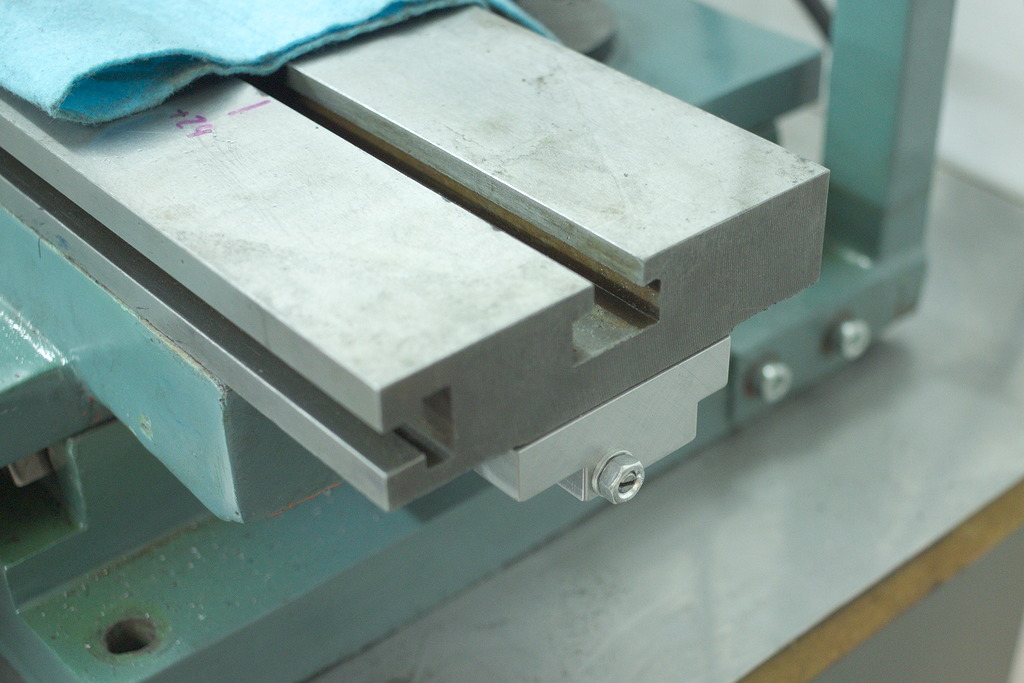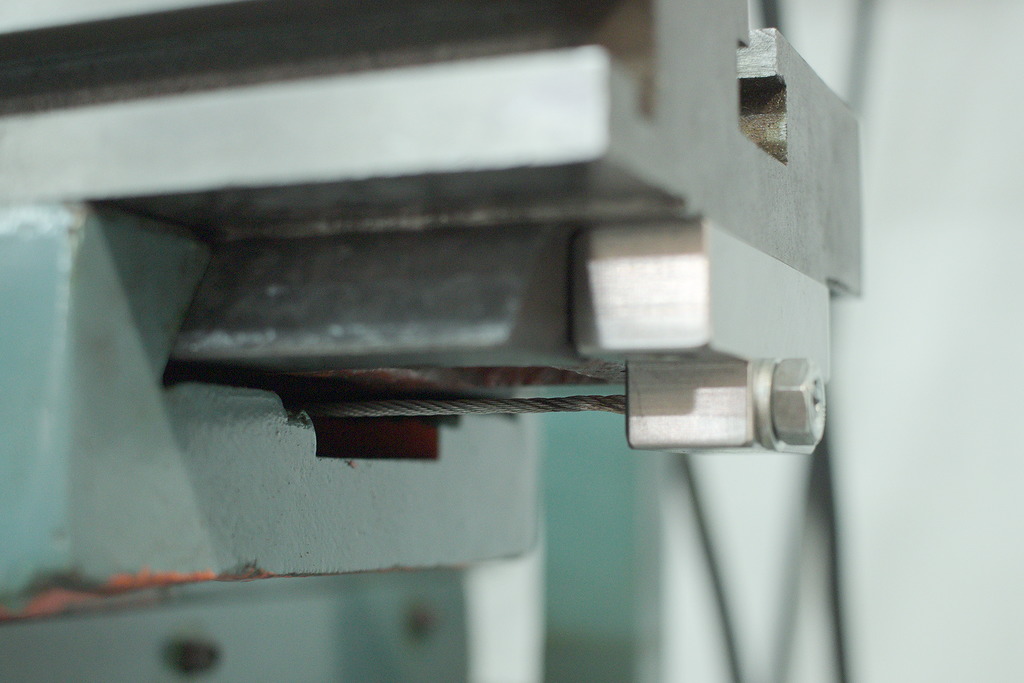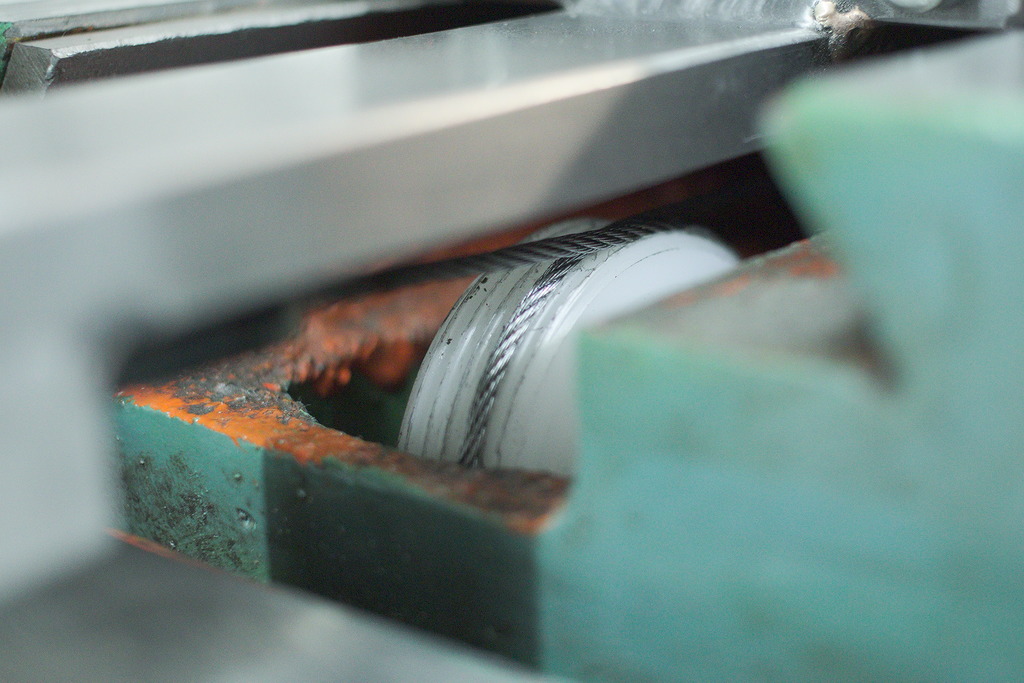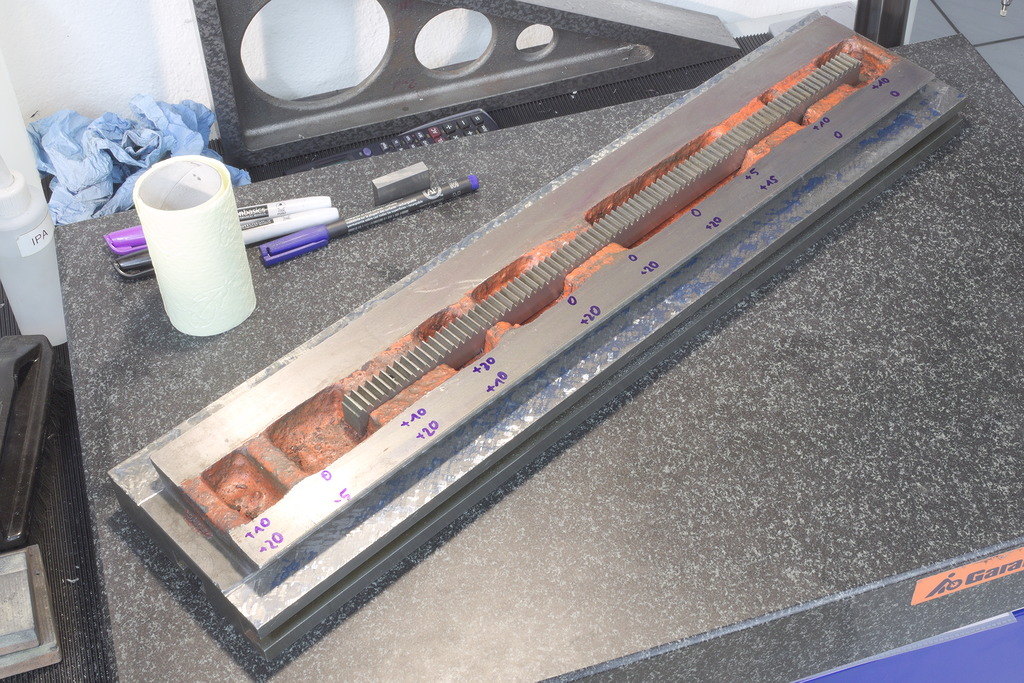
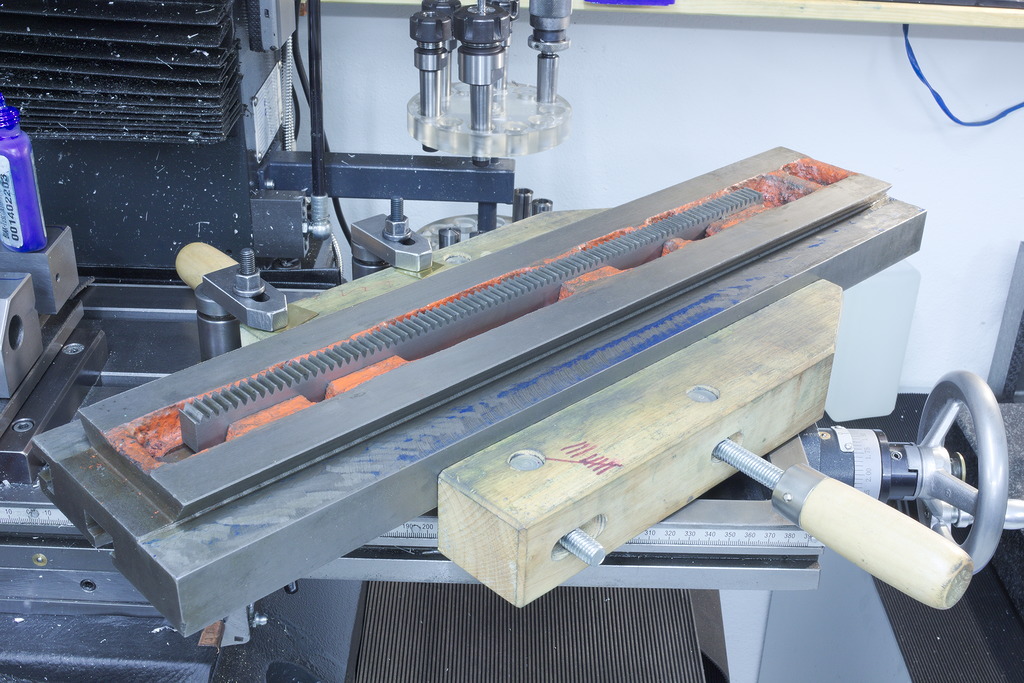
After some scraping, the first side of the dovetails flat sliding surface began to resemble something off precision:

Final measurements on the flat ways - The numbers are in microns:
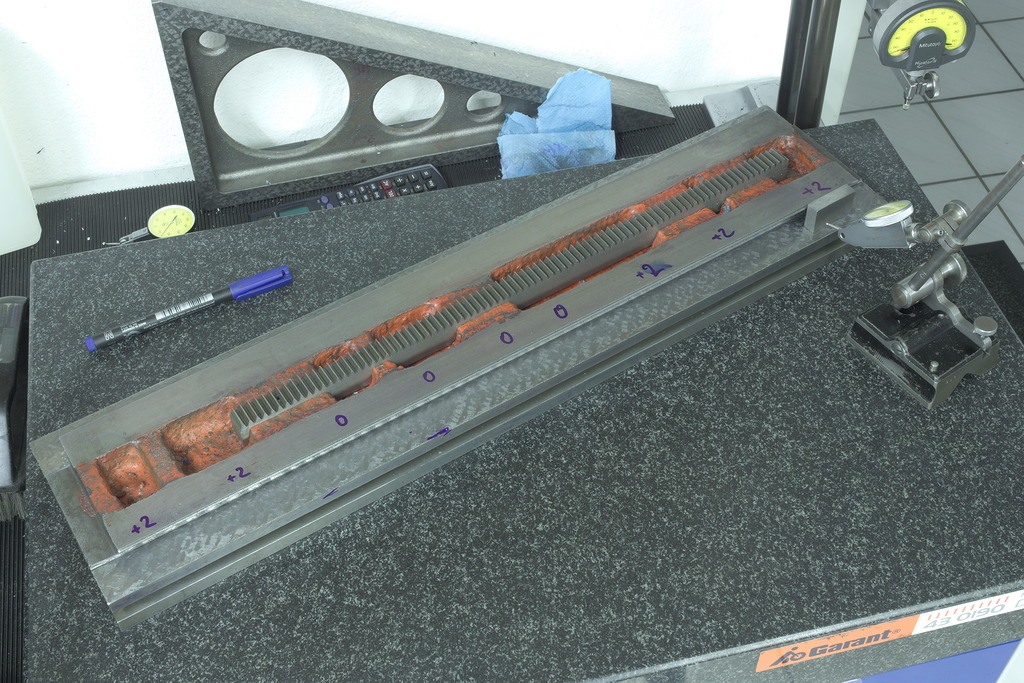
Working on the angled surfaces to get the dovetail parallel over the whole length.
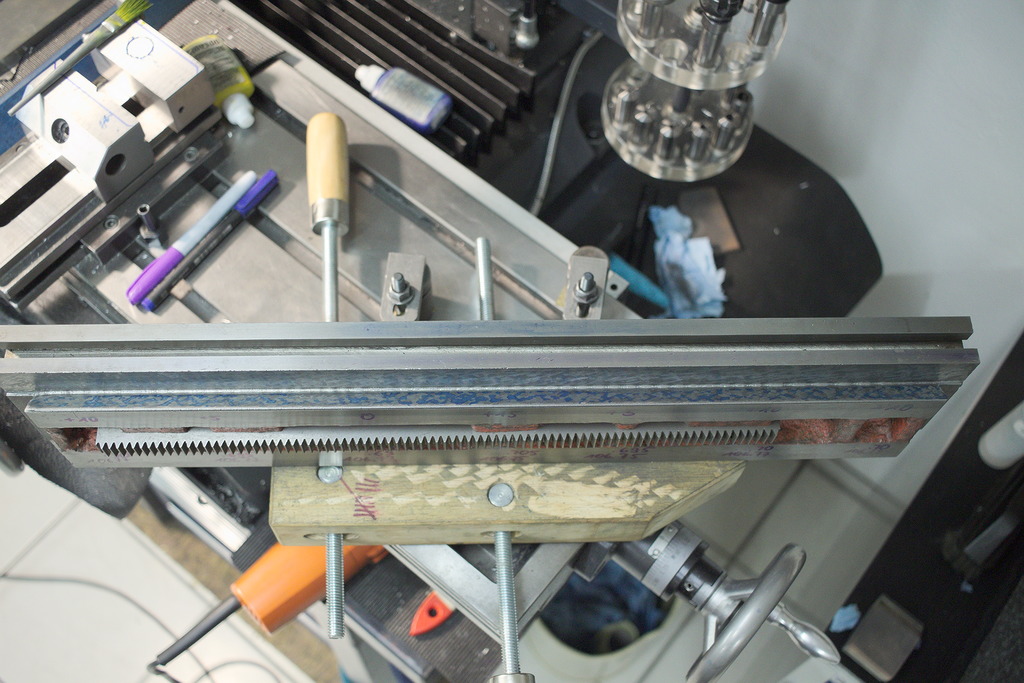
Got the ways parallel within 5 micron over the whole length:
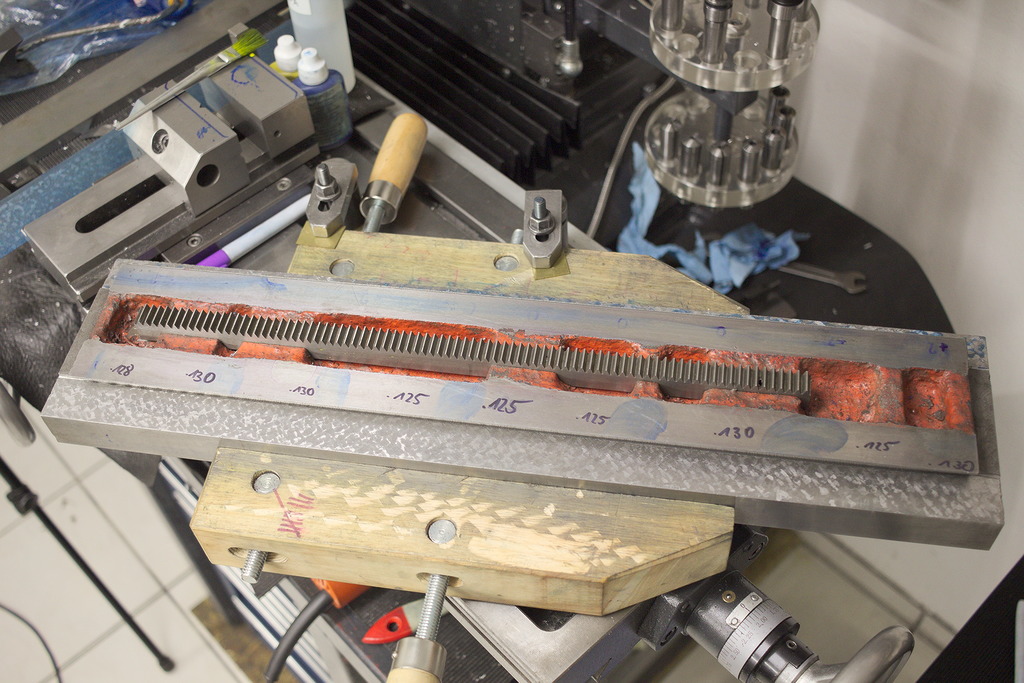
And the result of all the scraping? A table movement that is straight within roughly 2 microns over a distance of 300mm – I had to span the table with my large precision straightedge, because the table itself is about 0,01mm hollow in the middle. I will sort that out later.

Originaly, the table was driven by a rack and pinion drive – This works ok, but the gear always has a small amount of backlash, which can be a problem when doing “climb grinding”. Just as with climb milling, backlash can cause a major crash.
I decided to replace the geardrive with a cable. The gear was removed and replaced with a pulley that has a 2mm round crest thread cut on it.
The rack was replaced with 2mm steel cable, anchored on both ends of the table and looped 360° around the pulley.
The full loop of cable around the pulley creates more than enough friction to give a perfect, free of slip/backlash movement.
When designing something like this, try to get the cable as close to the neutral line of the table as possible, to minimize bending forces from tensioning the cable.

